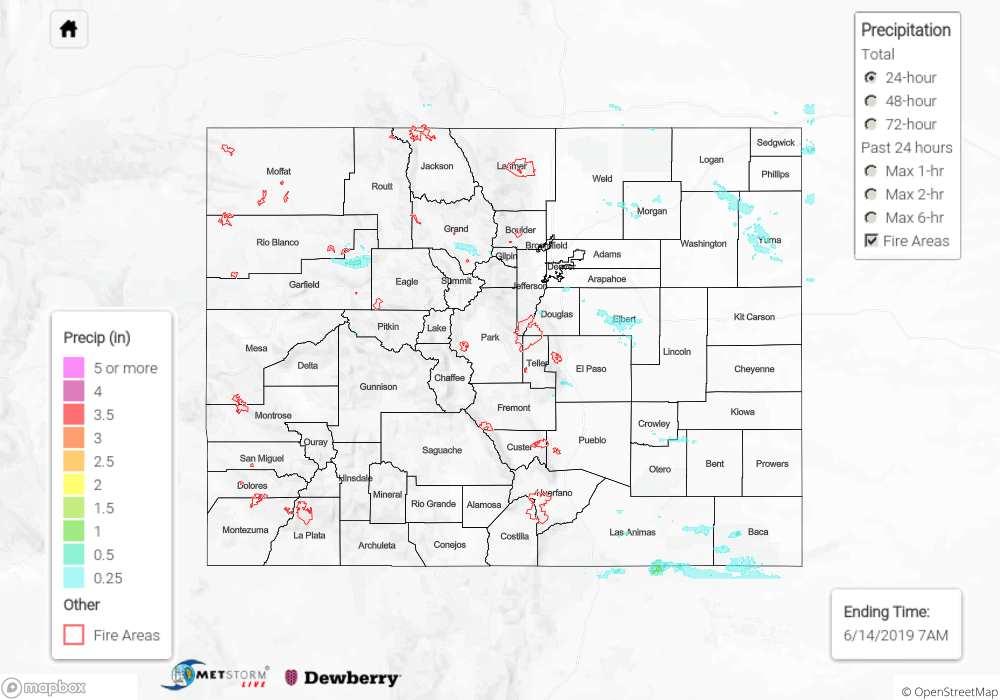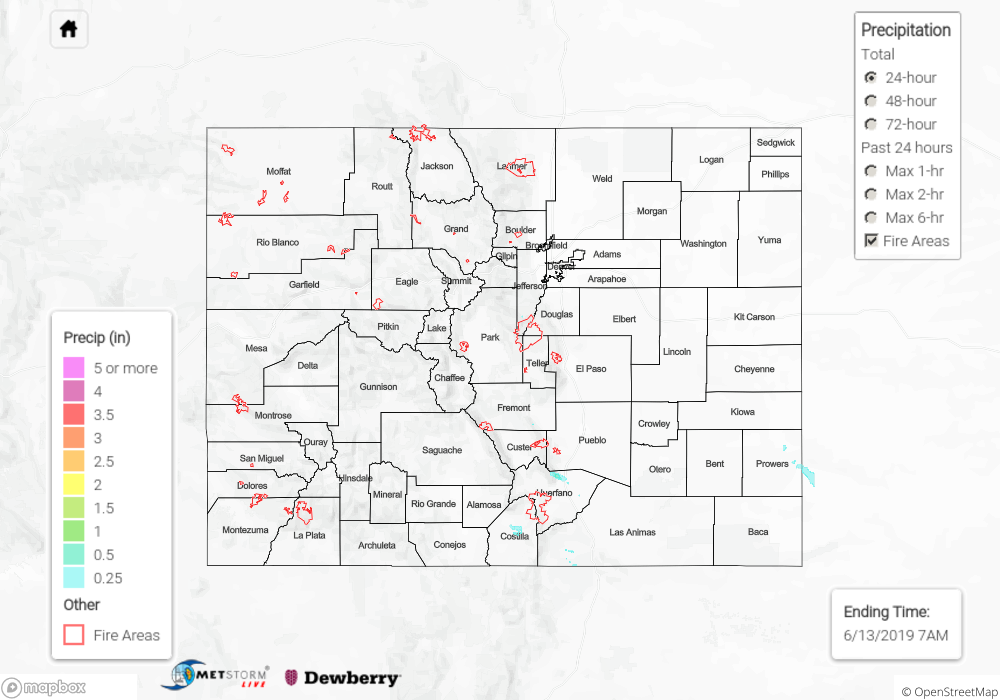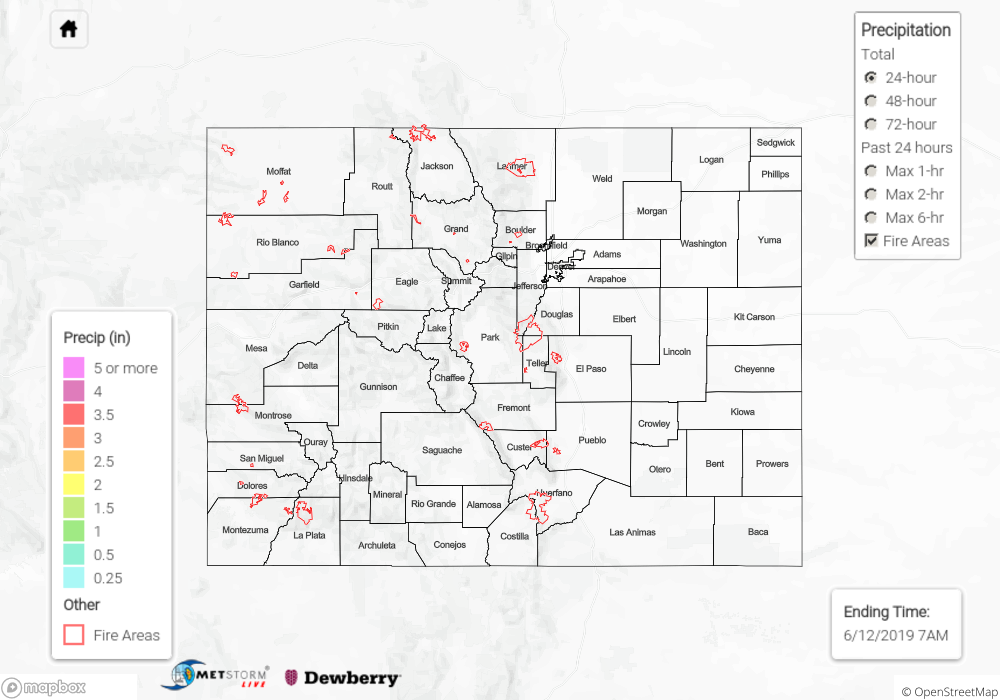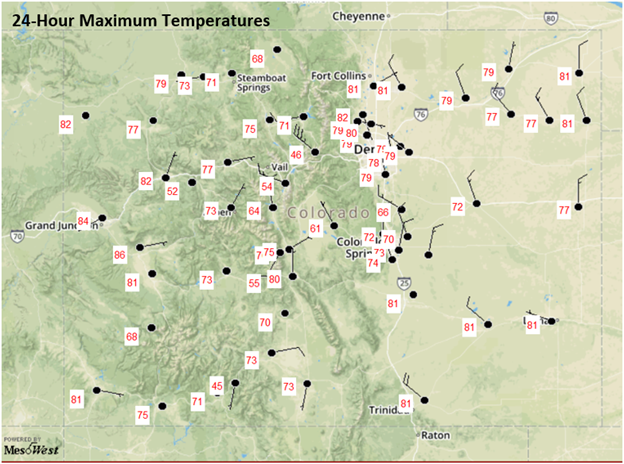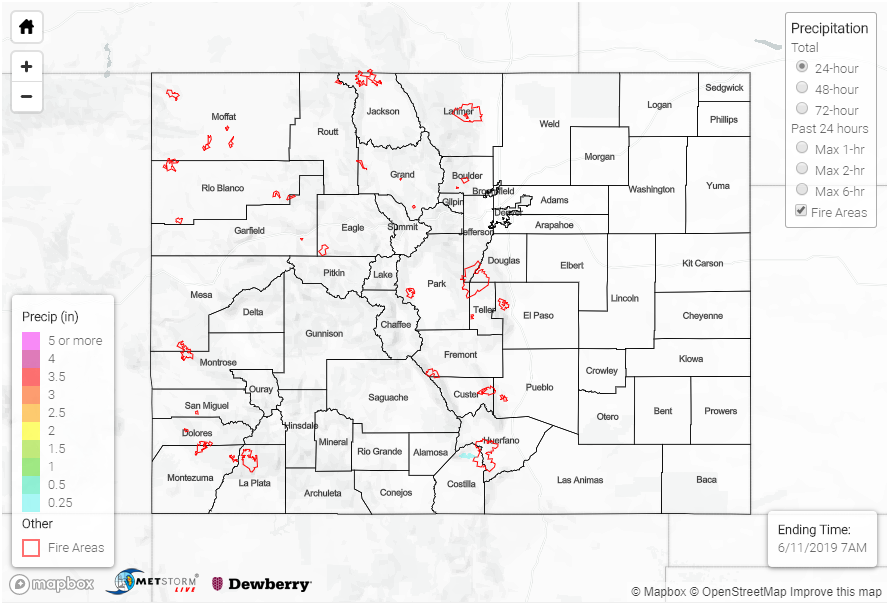Issue Date: Friday, June 14th, 2019
Issue Time: 10:05AM MDT
Summary:
Slight increase in low level moisture under northwesterly/westerly flow yesterday allowed for weak thunderstorms and rainfall to return to the forecast. Mid-level energy also helped increase the coverage of these storms. Rainfall totals from Thursday were greatest over the eastern plains and Palmer Ridge where weak thunderstorms dropped between 0.5 and 0.7 inches of rain. 1.5 inch hail occurred with the storm over Baca County. The largest CoCoRaHS report was near Sterling, which recorded 0.4 inches. Over the mountains, an isolated area in northern Gunnison County recorded 0.5 inches with additional rainfall over northeast Garfield County. Storms over northwest Colorado produced some gusty winds with reports between 50 and 55 mph. The largest gust was recorded at a mesonet in Garfield County, which measured at 69 mph. Flooding was not reported with these storms.
Snowmelt continued across the state with runoff beginning to inch closer to Action and Minor flooding stages. No new flooding reports were available as of this morning, but a new Flood Warning was issued for the Dolores River below Rico. The Flood Watch continues for SW Colorado and the upper Arkansas River through this weekend. Expecting most river flooding to be in lowland areas and banks will have possible erosion issues as well. For the latest, see today’s FTB post.
A nice way to track the rivers is using the AHPS gage network.
Here is a list of the current gages at Action or the Minor flooding stage (as of this morning):
- Eagle River at Gypsum
- Surface Creek near Cedaredge
- East River at Almont
- Tomichi Creek at Gunnison
- Mancos River near Mancos
- La Plata River above Hesperus
- Navajo River near Chromo
- Rio Grande near Del Norte – Flood Warning with the gage at Minor flooding
- Rio Grande at Alamosa
- Arkansas River at Salida
- Arkansas River at Wellsville
- Arkansas River at Parkdale
- Arkansas River at Canon City
- Arkansas River at Avondale (elevated due to dam releases from Monday)
To see estimated precipitation totals over your area yesterday, scroll down to the State Precipitation Map below.
Click Here For Map Overview
